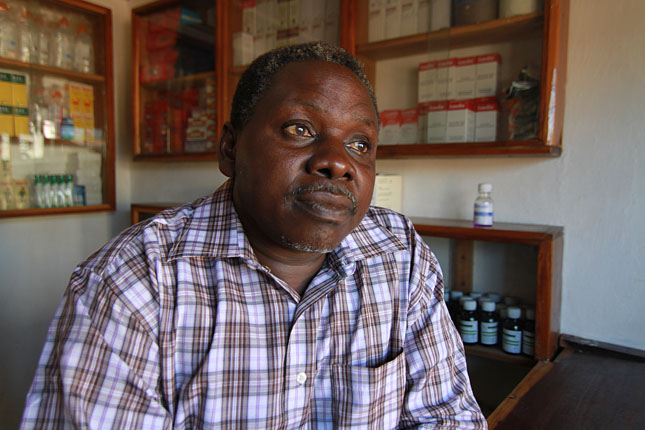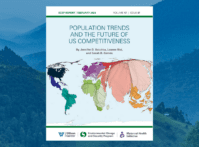In 2013,
nearly 300,000 women died during pregnancy and childbirth. The majority of those deaths were in developing countries and entirely preventable.
500 dollar loan. Much of the effort towards reducing this number has been focused on what governments should do differently, but the private sector plays just as important a role as the public sector, said a panel of experts at the Wilson Center on
September 17.
[Video Below]
The conceptual divide between the public and private sectors is not borne out in reality, said Dr. Priya Agrawal, executive director at Merck for Mothers, a 10-year million non-commercial initiative by Merck & Co. to improve maternal health in 30 countries including the United States, India, and many African nations.
“Most health systems are mixed health systems,” Agrawal said. “The U.S…has Medicaid and Medicare. The UK, where everyone thinks the NHS is a government-run public health system, [has]…independently contracted private providers. Most developed nations have mixed health systems.” Achieving
universal health coverage will require strengthening the private sector in many places.
But the private sector is anything but monolithic. Private providers in developing countries are often highly diverse and fragmented, said Gina Lagomarsino, chief operating officer and managing director of the non-profit
Results for Development.
Policymakers can take better advantage of the private sector’s strengths by providing a framework for businesses to thrive and ensuring consistent quality. While diverse and often disconnected from each other, most private maternal health care providers face the same challenges: expanding beyond the small scale and achieving financial sustainability.
Dispelling Myths
In most developing countries the local private sector is an “incredibly overlooked part of the health care system,” said
Agrawal.
The prevailing belief that only wealthy, middle income, or urban consumers access private health providers is largely a myth. An estimated 50 percent of Africans go to private providers for health care, including a majority of people in low-income quintiles in Uganda and Nigeria, said Agrawal.
In India, while more women in urban areas are having deliveries at private providers compared to women in rural areas (48 percent vs. 25 percent), 92 percent of rural household health care visits were to private providers, she said.
“Most health systems are mixed health systems”
An
analysis by the London School of Hygiene and Tropical Medicine of demographic and health survey data from 57 low and middle-income countries, supported by funding from Merck for Mothers, found that “at least 40 percent of women go to the private sector for family planning and for neonatal and delivery service,” Agrawal said.
Private maternal health care providers can also play a role in empowering women as leaders and entrepreneurs in their communities, said Agrawal. In many African countries, female entrepreneurs comprise the majority of private health care workers and many own their own businesses. Independent pharmacists, nurses, doctors, and midwives are embedded in communities where the public sector often has difficulty gaining access. They form personal connections with their patients, often serving not only as health care practitioners, but trusted confidants, respected leaders, and role models.
“The Holy Grail”
But the private health sector faces a host of structural and technical challenges, some of which stem from being so long-ignored.
Fragmentation – the disconnected and uncoordinated nature of small-scale private providers – is a key obstacle, said Lagomarsino. Many providers are very small and have trouble accessing resources to expand their services. As well, top-down funding streams from governments and NGOs have trouble finding them.
Results for Development runs the
Center for Health Market Innovations, which identifies innovative health care business models and then connects innovators with resources to scale up and improve their models, said Lagomarsino. They currently support 1,400 small private providers in Central and South America, the Middle East, Asia, and Southeast Asia, 300 of which are maternal and child health focused. More intermediary organizations, like nurses and midwives associations, she said, can also help connect private maternal health providers to public health ministries.
Data collection and quality is another major challenge. Small-scale providers struggle to collect, report, and monitor data. Without good data, it’s difficult for governments to monitor the quality of services being provided, which subsequently makes it difficult for the public health sector to contract out to private entities.
Without good data, it’s difficult for the public health sector to contract out to private entities
This disconnect is a major barrier in establishing a virtuous growth cycle for private health providers, said Lagomarsino. “Getting government purchasing is the holy grail…it’s very difficult to get it right in developing countries.”
A steady government purchasing stream makes it easier for new providers to enter the market; gives governments leverage over quality control; and gives providers incentive to improve their quality. Strong purchasing mechanisms (insurance, vouchers, and other contracting models) can also improve access for the poorest and most marginalized populations – a major challenge in maternal health.
Social franchises, a model that uses franchising to transfer knowledge and experience from one successful enterprise to another to achieve social benefits as opposed to profits, are often based on subsidies that have to be phased out eventually, said Karl Hoffman, president and CEO of
Population Services International (PSI). Getting these enterprises to financial sustainability quickly is therefore critical.
PSI, the world’s largest social franchising organization, provides clinics in their network with branding, technical assistance, skills training, and affordable access to prescription drugs. Branding offers a chance for private providers to differentiate themselves from competitors and can be used by intermediaries such as PSI to uphold and enforce quality standards.
PSI’s goal is to bring participating providers behind a brand promise, not entirely unlike a fast-food franchise, so consumers have more choice and information and can trust in the quality, said Hoffman. “Reframing the provider as the consumer is one way to get providers to adopt behaviors and products that are better for their consumers, such as longer-acting contraceptives,” he said. Eventually, he envisions tools that provide Yelp-like ratings for private providers in developing countries.
PSI also works with medical entrepreneurs, mostly women, Hoffman said, to help create demand by giving out information on basic health guidelines; for example, how many times women should visit a clinic before giving birth.

Connecting and Scaling Up
Social franchises are a promising way to connect private providers with sources of funding and improve quality, but there are still pitfalls. For example, some private providers taking part in organizations like Merck for Mothers no longer want to pay membership fees after they receive training, said Agrawal.
As intermediary and social franchising models proliferate, like PSI,
Jhpiego, and
Merrygold, there are ample opportunities to learn from their experience, said Agrawal.
Doing so may unlock entrepreneurial innovation to finally reduce
stubborn maternal and newborn mortality and morbidity rates. “We need to create an enabling environment so more good models are developed and scaled,” said Agrawal. Leveraging economies of scale to provide discounted supplies to providers and creating a more streamlined data collection and monitoring process are keys in this regard.
For the thousands of women facing potentially fatal prenatal and maternal health complications, whether they get care from a public or private provider matters little; they simply want access to quality treatment.
Event Resources:
Sources: Merck for Mothers, Population Services International, Results for Development.
Photo Credit: A small pharmacy in Tanzania, courtesy of Sean Peoples/Michael Miller/Wilson Center.

 A Publication of the Stimson Center.
A Publication of the Stimson Center.







